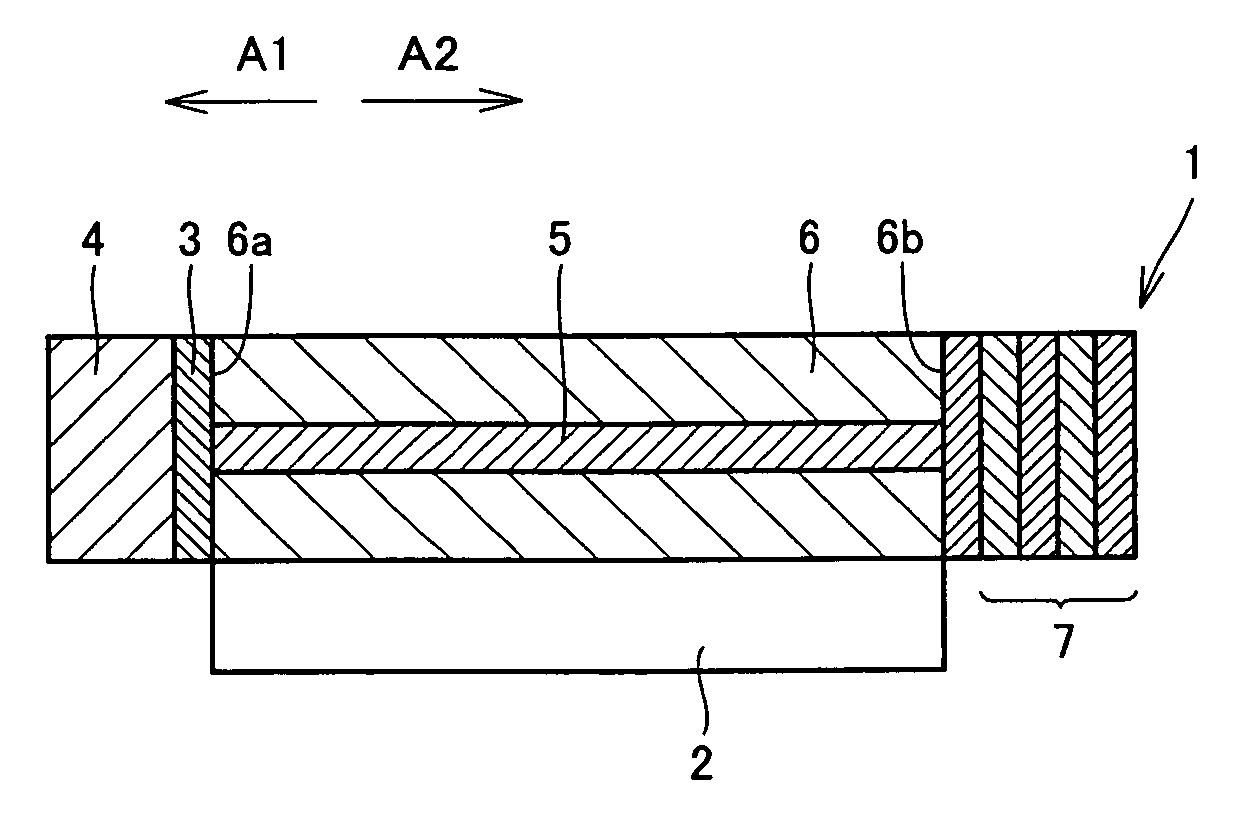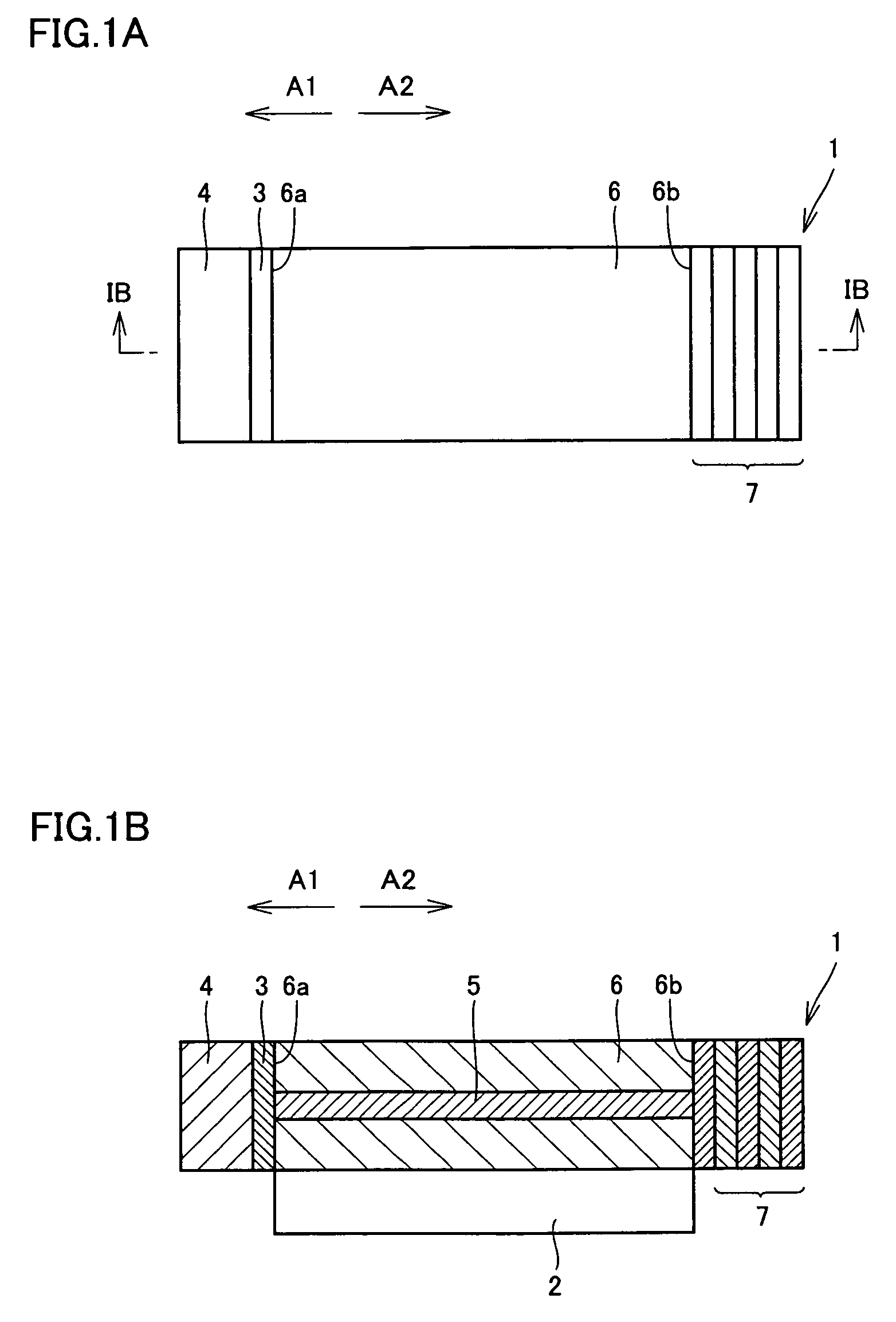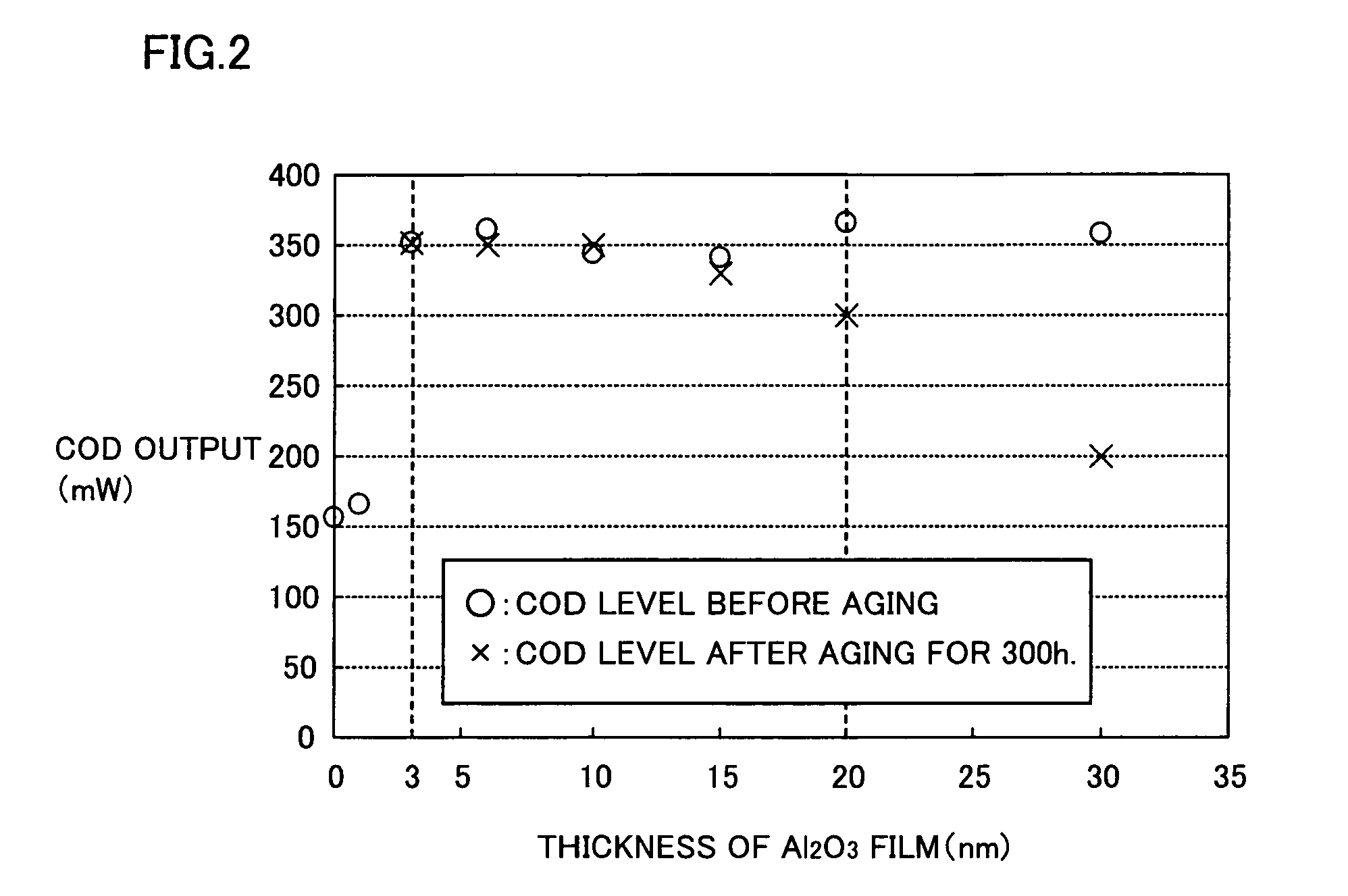Semiconductor laser diode
a laser diode and semiconductor technology, applied in semiconductor lasers, laser details, electrical equipment, etc., can solve the problems of reducing yield, disadvantageous low cod level, and inferior adhesiveness between the semiconductor interface and the dielectric film, so as to reduce the production yield and improve the heat radiability. , the effect of reducing the production yield
- Summary
- Abstract
- Description
- Claims
- Application Information
AI Technical Summary
Benefits of technology
Problems solved by technology
Method used
Image
Examples
example 1
[0083]An n-type In0.5(Ga0.3Al0.7)0.5P cladding layer (n=3 to 4×1017 cm−3) having a thickness of 2.2 μm doped with Si, an active layer 5, a p-type In0.5(Ga0.3Al0.7)0.5P cladding layer (p=9×1017 cm−3) having a thickness of 1.5 μm doped with Zn, a p-type In0.5Ga0.5P energizable layer having a thickness of 50 nm doped with Zn and a p-type GaAs cap layer having a thickness of 0.5 μm doped with Zn were successively formed on an n-type GaAs substrate (semiconductor substrate) 2. Active layer 5 was formed by successively stacking an In0.5(Ga0.5Al0.5)0.5P first light guide layer having a thickness of 50 nm, an MQW active layer formed by an In0.65Ga0.35P well layer having a thickness of 5 nm and an In0.5(Ga0.5Al0.5)0.5P barrier layer having a thickness of 6 nm and an In0.5(Ga0.5Al0.5)0.5P second light guide layer having a thickness of 50 nm. These layers were formed by metal organic chemical vapor deposition (MOCVD).
[0084]Then, a striped resist material was formed on an end surface of a lamin...
example 2
[0090]A semiconductor laser diode 1 according to Example 2 of the present invention similar to that according to the embodiment shown in FIGS. 1A and 1B was manufactured similarly to Example 1, except that first and second dielectric films 3 and 4 were prepared from Al2O3 (thickness: 6 nm) and AlxOyNz (thickness: 100 nm) respectively without formation of a third dielectric film. Reflectivity of this semiconductor laser diode measured similarly to Example 1 was 7%. The semiconductor laser diode according to Example 2 was also preferable as a red semiconductor laser diode of the 650 nm band.
example 3
[0091]A semiconductor laser diode 1′ according to Example 3 of the present invention similar to that according to the embodiment shown in FIG. 6 was manufactured similarly to Example 1, except that first, second and third dielectric films 3, 4 and8 were prepared from AlxOyNz (thickness: 20 nm) obtained by introducing 5% of nitrogen into Al2O3, AlxOyNz (thickness: 30 nm) having an oxygen content of 10% and SiO2 respectively. Reflectivity of this semiconductor laser diode measured similarly to Example 1 was 8%. The semiconductor laser diode according to Example 3 was also preferable as a red semiconductor laser diode of the 650 nm band.
[0092]In the semiconductor laser diode according to Example 3, thermal conductivity on an interface was more improved as compared with the semiconductor laser diodes according to Examples 1 and 2 due to first dielectric film 3 of AlxOyNz prepared by introducing 5% of nitrogen into Al2O3 and second dielectric film 4 of AlxOyNz having the oxygen content o...
PUM
 Login to View More
Login to View More Abstract
Description
Claims
Application Information
 Login to View More
Login to View More - R&D
- Intellectual Property
- Life Sciences
- Materials
- Tech Scout
- Unparalleled Data Quality
- Higher Quality Content
- 60% Fewer Hallucinations
Browse by: Latest US Patents, China's latest patents, Technical Efficacy Thesaurus, Application Domain, Technology Topic, Popular Technical Reports.
© 2025 PatSnap. All rights reserved.Legal|Privacy policy|Modern Slavery Act Transparency Statement|Sitemap|About US| Contact US: help@patsnap.com



